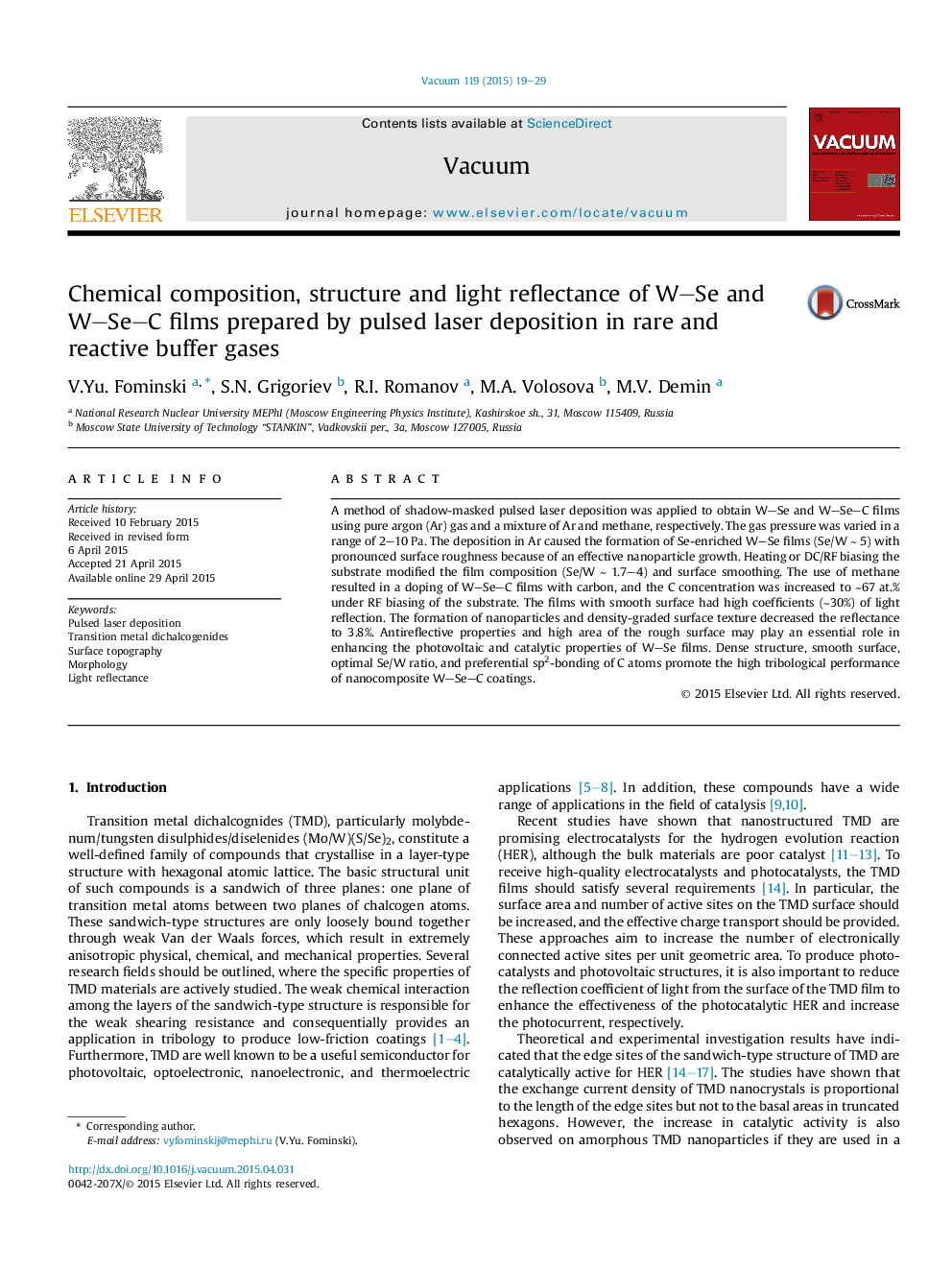| Article ID | Journal | Published Year | Pages | File Type |
|---|---|---|---|---|
| 1689908 | Vacuum | 2015 | 11 Pages |
•Pulsed laser deposition with mask in Ar/CH4 gases was used for W–Se–C film synthesis.•Temperature and DC/RF bias of substrate greatly affect the film characteristics.•Films with smooth/rough surface and varied Se/W/C content can be obtained.•Nanotexture and corrugated film surface decrease the reflection coefficient to 3.8%.
A method of shadow-masked pulsed laser deposition was applied to obtain W–Se and W–Se–C films using pure argon (Ar) gas and a mixture of Ar and methane, respectively. The gas pressure was varied in a range of 2–10 Pa. The deposition in Ar caused the formation of Se-enriched W–Se films (Se/W ∼ 5) with pronounced surface roughness because of an effective nanoparticle growth. Heating or DC/RF biasing the substrate modified the film composition (Se/W ∼ 1.7–4) and surface smoothing. The use of methane resulted in a doping of W–Se–C films with carbon, and the C concentration was increased to ∼67 at.% under RF biasing of the substrate. The films with smooth surface had high coefficients (∼30%) of light reflection. The formation of nanoparticles and density-graded surface texture decreased the reflectance to 3.8%. Antireflective properties and high area of the rough surface may play an essential role in enhancing the photovoltaic and catalytic properties of W–Se films. Dense structure, smooth surface, optimal Se/W ratio, and preferential sp2-bonding of C atoms promote the high tribological performance of nanocomposite W–Se–C coatings.
